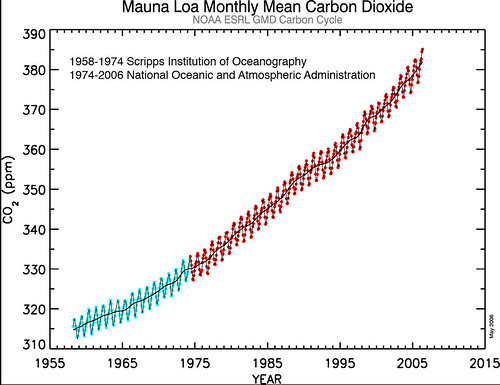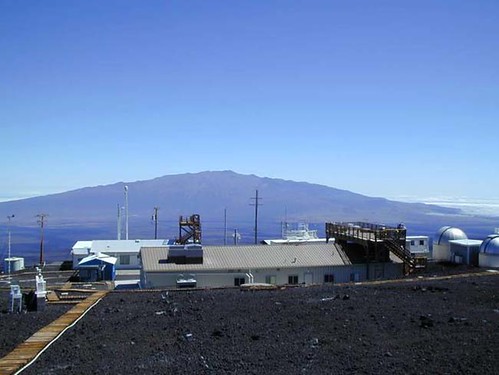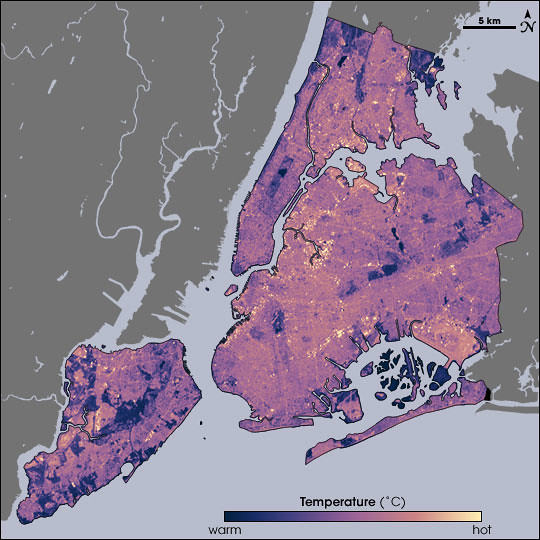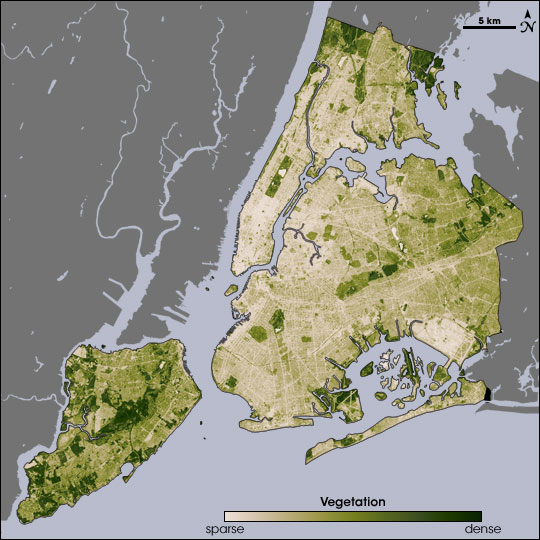2014-10-13: I just discovered that none of the original links are good. Two web sites linked from this post – Climate Choices, and the Northeast Climate Impacts Assessment (NECIA) – now redirect to the Union of Concerned Scientists (UCS).
I first started writing this post in the Fall of 2006. I drafted it in October 2006, but never published it. I think I was too overwhelmed by the impact of what I was writing to release it. The IPCC report has been issued since then. What I wrote over a year ago no longer sounds so alarmist to me. A post on Garden Rant spurred me to dust this off and get it out there, however imperfect I may think it is.
There’s a lot to this, and I’ve gone through some changes just to take it all in. Here’s the short version:
- Climate change is inevitable. It’s happening already. We can’t undo the damage we’ve already caused. We can only ride it out.
- If we continue as we have, the impacts will be severe. It’s going to get really, really bad.
- Actions we take now can reduce the impact. If we start doing things differently now, it won’t get as bad as it could. We can affect the future.
There are those who cling, at times violently, to ignorance and dismissal of the facts of climate change induced by human activity. “De-nial ain’t just a river in Egypt.” It reminds me of the classical stages of grieving described 40 years ago by Dr. Elisabeth Kübler-Ross, all of which are demonstrated in different responses expressed around this topic:
- Denial. The three-dog argument – denial, minimization, projection – applies here: There’s no climate change (it’s not a problem). The climate change is within historical ranges (it’s not so bad). It’s a natural process (it’s not my problem).
- Anger. Protest, boycott, rage against the machine, fight the system, fight the man.
- Bargaining. Carbon “credits” is the most obvious example. Little different from buying indulgences from a corrupt church.
- Depression. There’s nothing we can do about it.
- Acceptance. It’s going to happen. It’s happening. Now what do we do about it?
In July 2006, I wrote about the Bemidji Statement on Seventh Generation Guardianship:
The seventh generation would be my great-grandchildren’s great-grandchildren’s children. (If I had, or were going to have, any children to begin with.) If a generation occurs within the range of 20-30 years, we’re talking 140-210 years. Call it 175 years from now.
It’s the year 2181. It’s hard for me to imagine anything I can do to stave off or reduce the multiple disasters which we will have caused.
That was the voice of depression. I feel some hope now. The changes I make now, the work I do now, can make a difference. But only if I accept what’s going to happen if I do nothing.
A report (PDF) issued in October 2006 details what’s going to happen to the climate of the Northeastern United States – Maine, New Hampshire, Vermont, Massachusetts, Rhode Island, Connecticut, New York, New Jersey, and Pennsylvania – in this century:
The Northeast Climate Impacts Assessment (NECIA) is a collaboration between the Union of Concerned Scientists and a team of independent experts using state-of-the-art tools to assess how global warming will affect the Northeast United States following two different paths: A higher emissions path with continued rapid growth in global warming pollution, and a lower emissions path with greatly reduced heat trapping emissions.
The goal of this assessment is to provide opinion leaders, policymakers, and the public with the best available science as we make informed choices about reducing our heat-trapping emissions and managing the changes we cannot avoid.
– Climate Choices in the Northeast, Climate Choice
The [Northeast] region, comprising nine of the 50 US states, is critical, since it alone is the world’s seventh-largest emitter of greenhouse gases, just behind the entire nation of Germany and ahead of all of Canada …
Climate changes already under way will continue to accelerate in the next few decades, whether the high-emissions or low-emissions path is taken, but the results will diverge dramatically by the time today’s newborns reach middle age, the study found.
– US Northeast Could Warm Drastically by 2100, PlanetArk
Even the more optimistic, lower-emission scenario – if we aggressively reduce our contributions to global warming – is concerning. If we do nothing, NYC will become unliveable by the end of this century.
The higher-emission scenario … represents a future with fossil fuel-intensive economic growth and a global population that peaks mid-century and then declines. In this scenario, concentrations of atmospheric carbon dioxide (the main heat-trapping gas) reach 940 parts per million (ppm) by 2100—more than triple pre-industrial levels.
The lower-emission scenario … also represents a world with high economic growth and a global population that peaks by mid-century, then declines. However, the lower-emission scenario includes a shift to less fossil fuel-intensive industries and the introduction of clean and resource-efficient technologies. Atmospheric carbon dioxide concentrations reach 550 ppm by 2100, about double pre-industrial levels. Current carbon dioxide concentrations stand at 380 ppm (about 40 percent above pre-industrial levels).
– Scenarios and Models, Climate Choice
 Over the past 40 years, NYC has averaged 15 days over 90F, and 2 days over 100F each year. In the lower-emission scenario, by the end of the century NYC will have 39 days over 90F, and 7 days over 100F. Under higher (unreduced) emissions, NYC will have 72 days over 90F (five times the current historical average), and 25 days over 100F (ten times the current historical average).
Over the past 40 years, NYC has averaged 15 days over 90F, and 2 days over 100F each year. In the lower-emission scenario, by the end of the century NYC will have 39 days over 90F, and 7 days over 100F. Under higher (unreduced) emissions, NYC will have 72 days over 90F (five times the current historical average), and 25 days over 100F (ten times the current historical average).
While these urban temperature projections seem to include the overall urban heat island effect, they do not describe surface temperatures, which I wrote about in August 2006. Rooftop temperatures can exceed 150F in the summer. These effects will be amplified even more when the city bakes for weeks and months without relief. We can expect heat-related deaths in the tens of thousands. Heat-related structural failures are not out of the question; the infrastructure of the city was not built with these conditions in mind.
What about winter temperatures? These will also increase. They have already increased by 3.8F from 1970 to 2000. Under the lower-emission scenario, average winter temperatures over the region will increase by 5-7.5F. With higher emissions, we will see 8-12F increase in winter temperatures. The USDA Hardiness Zones are delineated by 5F, so this means my garden is moving 1-2 zones this century, from Zone 7a to Zone 7b or 8a.
For another point of comparison, when things were that much cooler than they are now, NYC was under a mile of ice.
The temperature projections do not include the apparent temperature caused by increased humidity – the heat index – which can make it feel up to 20F hotter. Warmer air can hold more moisture. The increase in humidity will ramp up the heat index faster than the actual temperature.
 This map represents how climate will shift in the NYC area through this century. This includes consideration of the heat index. Basically, we’ll be somewhere between Virgina Beach and Savannah.
This map represents how climate will shift in the NYC area through this century. This includes consideration of the heat index. Basically, we’ll be somewhere between Virgina Beach and Savannah.
Thanks to PlanetArk for bringing this to my attention
[bit.ly]
[goo.gl]
Related Posts
Imagine Flatbush 2030, November 20, 2007
Barbara Corcoran Hates the Earth, November 18, 2007
Preserving Livable Streets, November 7, 2007
2006 was the fifth-warmest year on record, February 20, 2007
The IPCC Report: Grief & Gardening #6, February 4, 2007
Buying Indulgences: The Carbon Market, November 23, 2006
NASA Earth Observatory Maps NYC’s Heat Island, Block by Block, August 6, 2006
The Bemidji Statement on Seventh Generation Guardianship, July 22, 2006
Links
Northeast Climate Impacts Assessment (NECIA) (link corrected 2014-10-13)
Full report (PDF, 159 pages, link corrected 2014-10-13)
Summary (PDF, 8 pages, link defunct 2014-10-13)
Climate Choice (link defunct, 2014-10-13)
Union of Concerned Scientists










